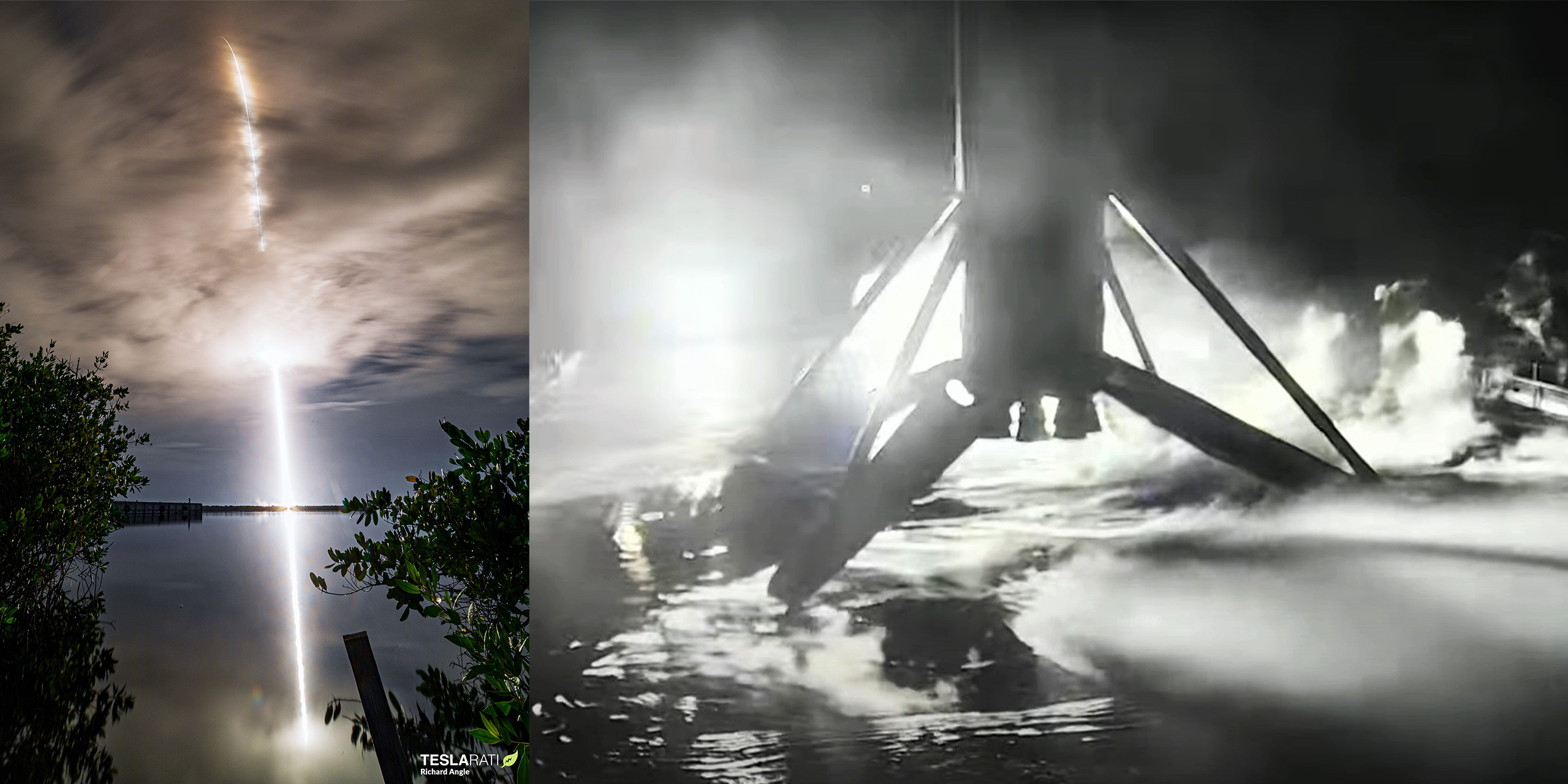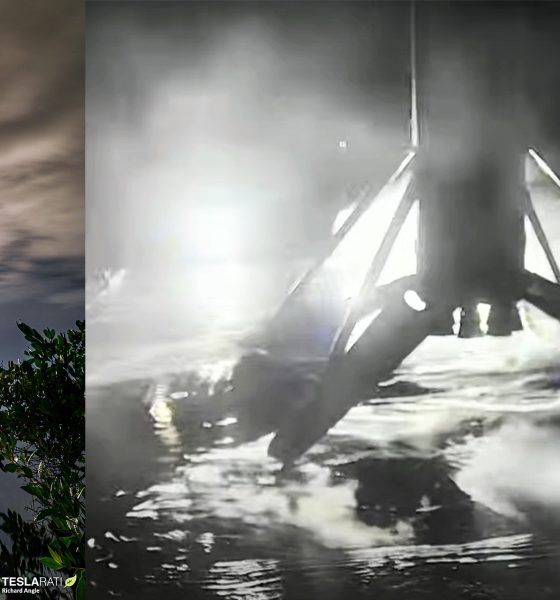

News
SpaceX aces fifth astronaut launch in a year and half
Less than 18 months after its first crewed launch, SpaceX’s Crew Dragon spacecraft and Falcon 9 rocket have successfully completed their fifth astronaut launch, sending a crew of four on their way to the International Space Station (ISS).
After ~10 days of weather and sequencing delays and two days after Crew-2 astronauts returned to Earth in a separate Dragon, once-flown Falcon 9 booster B1067 and new Crew Dragon capsule C210 (christened Endeavour) lifted off at 9:03pm EST on Wednesday, November 10th with four Crew-3 astronauts aboard.
For NASA astronauts Raja Chari, Thomas Marshburn, and Kayla Barron, and ESA astronaut Matthias Maurer, the launch is just the beginning of a more than six-month stint in low Earth orbit. When they arrive at the ISS around 7pm EST, November 11th, they’ll join one other NASA astronaut and two Russian cosmonauts – temporarily left for three days as a bit of a skeleton crew after Crew-2’s departure. Nominally, Crew-3 would have launched before Crew-2 to allow a true on-orbit hand-off with zero interruption, but poor weather ultimately led NASA to flip the order of operations at the last minute.
With just a few days to prepare, SpaceX and NASA managed to make that significant change happen and Crew-2 returned around 10pm EST on November 8th. Less than two days later, thanks to a near-perfect recovery, Crew-3 lifted off and is now in orbit and on the way to the ISS. SpaceX’s 24th launch of the year, Crew-3 is also its fifth astronaut launch since Demo-2, which saw the company launch its first crewed test flight – carrying two NASA astronauts – on May 30th, 2020.
Relative to other crewed spacecraft, completing the first five astronaut launches in less than a year and a half is no small feat. Crew Dragon is by no means the fastest to reach that five-flight milestone and is actually middle of the pack but a simple list of names and numbers belies the fact that every other spacecraft on that list was developed by a government agency with far more power over their budgets. Crew Dragon’s development, on the other hand, was funded and overseen by NASA but it was fully managed, designed, and built by private company SpaceX under a fixed-price contract.
| Spacecraft | Time to 5 Crewed Flights |
| Gemini | 267d | 8 months 22 days |
| Apollo CSM | 278d | 9 months 5 days |
| Soyuz 7K | 351d | 11 months 16 days |
| Soyuz MS | 386d | 12 months 21 days |
| Mercury | 516d | 16 months 28 days |
| Crew Dragon | 529d | 17 months 11 days |
| Soyuz TM | 571d | 18 months 24 days |
| Shuttle | 578d | 18 months 30 days |
| Soyuz TMA-M | 646d | 21 months 7 days |
| Soyuz TMA | 715d | 23 months 14 days |
| Soyuz T | 749d | 24 months 19 days |
| Vostok | 793d | 26 months 2 days |
| Shenzhou | 3542d | 116 months 11 days |
SpaceX is also on track to launch Axiom-1 (the first all-private astronaut mission to the ISS) and Crew-4 – Dragon’s sixth and seventh astronaut launches – before the second anniversary of Demo-2. Of those seven scheduled launches, four will have been completed for NASA in less than 18 months – a launch cadence the space agency never expected its Commercial Crew Program partners would need to support. However, partner Boeing has unfortunately mismanaged its Starliner spacecraft development, causing multiple in-flight anomalies and ultimately incurring years of delays. Originally scheduled to perform its equivalent of Dragon’s Demo-2 test flight (CFT) in 2020, Starliner’s first crewed launch is now highly unlikely to occur before 2023.
As a result, NASA has been forced to lean entirely on SpaceX and SpaceX has had to pick up the slack and rapidly learn how to operate Crew Dragon at twice its planned cadence. Thankfully, despite the fact that Crew Dragon will ultimately cost NASA ~40% and $2 billion less than Starliner, SpaceX has more than managed to rise to the challenge and ensure that NASA has had uninterrupted access to the ISS since November 2020. Crew-3 continues that uninterrupted access – a service that Crew Dragon and SpaceX alone are now likely to provide until at least early to mid-2023.

Elon Musk
Delaware Supreme Court reinstates Elon Musk’s 2018 Tesla CEO pay package
The unanimous decision criticized the prior total rescission as “improper and inequitable,” arguing that it left Musk uncompensated for six years of transformative leadership at Tesla.

The Delaware Supreme Court has overturned a lower court ruling, reinstating Elon Musk’s 2018 compensation package originally valued at $56 billion but now worth approximately $139 billion due to Tesla’s soaring stock price.
The unanimous decision criticized the prior total rescission as “improper and inequitable,” arguing that it left Musk uncompensated for six years of transformative leadership at Tesla. Musk quickly celebrated the outcome on X, stating that he felt “vindicated.” He also shared his gratitude to TSLA shareholders.
Delaware Supreme Court makes a decision
In a 49-page ruling Friday, the Delaware Supreme Court reversed Chancellor Kathaleen McCormick’s 2024 decision that voided the 2018 package over alleged board conflicts and inadequate shareholder disclosures. The high court acknowledged varying views on liability but agreed rescission was excessive, stating it “leaves Musk uncompensated for his time and efforts over a period of six years.”
The 2018 plan granted Musk options on about 304 million shares upon hitting aggressive milestones, all of which were achieved ahead of time. Shareholders overwhelmingly approved it initially in 2018 and ratified it once again in 2024 after the Delaware lower court struck it down. The case against Musk’s 2018 pay package was filed by plaintiff Richard Tornetta, who held just nine shares when the compensation plan was approved.
A hard-fought victory
As noted in a Reuters report, Tesla’s win avoids a potential $26 billion earnings hit from replacing the award at current prices. Tesla, now Texas-incorporated, had hedged with interim plans, including a November 2025 shareholder-approved package potentially worth $878 billion tied to Robotaxi and Optimus goals and other extremely aggressive operational milestones.
The saga surrounding Elon Musk’s 2018 pay package ultimately damaged Delaware’s corporate appeal, prompting a number of high-profile firms, such as Dropbox, Roblox, Trade Desk, and Coinbase, to follow Tesla’s exodus out of the state. What added more fuel to the issue was the fact that Tornetta’s legal team, following the lower court’s 2024 decision, demanded a fee request of more than $5.1 billion worth of TSLA stock, which was equal to an hourly rate of over $200,000.
Delaware Supreme Court Elon Musk 2018 Pay Package by Simon Alvarez
News
Tesla Cybercab tests are going on overdrive with production-ready units
Tesla is ramping its real-world tests of the Cybercab, with multiple sightings of the vehicle being reported across social media this week.

Tesla is ramping its real-world tests of the Cybercab, with multiple sightings of the autonomous two-seater being reported across social media this week. Based on videos of the vehicle that have been shared online, it appears that Cybercab tests are underway across multiple states.
Recent Cybercab sightings
Reports of Cybercab tests have ramped this week, with a vehicle that looked like a production-ready prototype being spotted at Apple’s Visitor Center in California. The vehicle in this sighting was interesting as it was equipped with a steering wheel. The vehicle also featured some changes to the design of its brake lights.
The Cybercab was also filmed testing at the Fremont factory’s test track, which also seemed to involve a vehicle that looked production-ready. This also seemed to be the case for a Cybercab that was spotted in Austin, Texas, which happened to be undergoing real-world tests. Overall, these sightings suggest that Cybercab testing is fully underway, and the vehicle is really moving towards production.
Production design all but finalized?
Recently, a near-production-ready Cybercab was showcased at Tesla’s Santana Row showroom in San Jose. The vehicle was equipped with frameless windows, dual windshield wipers, powered butterfly door struts, an extended front splitter, an updated lightbar, new wheel covers, and a license plate bracket. Interior updates include redesigned dash/door panels, refined seats with center cupholders, updated carpet, and what appeared to be improved legroom.
There seems to be a pretty good chance that the Cybercab’s design has been all but finalized, at least considering Elon Musk’s comments at the 2025 Annual Shareholder Meeting. During the event, Musk confirmed that the vehicle will enter production around April 2026, and its production targets will be quite ambitious.
News
Tesla gets a win in Sweden as union withdraws potentially “illegal” blockade
As per recent reports, the Vision union’s planned anti-Tesla action might have been illegal.

Swedish union Vision has withdrawn its sympathy blockade against Tesla’s planned service center and showroom in Kalmar. As per recent reports, the Vision union’s planned anti-Tesla action might have been illegal.
Vision’s decision to pull the blockade
Vision announced the blockade in early December, stating that it was targeting the administrative handling of Tesla’s facility permits in Kalmar municipality. The sympathy measure was expected to start Monday, but was formally withdrawn via documents sent to the Mediation Institute and Kalmar Municipality last week.
As noted in a Daggers Arbete report, plans for the strike were ultimately pulled after employer group SKR highlighted potential illegality under the Public Employment Act. Vision stressed its continued backing for the Swedish labor model, though Deputy negotiation manager Oskar Pettersson explained that the Vision union and IF Metall made the decision to cancel the planned strike together.
“We will not continue to challenge the regulations,” Petterson said. “The objection was of a technical nature. We made the assessment together with IF Metall that we were not in a position to challenge the legal assessment of whether we could take this particular action against Tesla. Therefore, we chose to revoke the notice itself.”
The SKR’s warning
Petterson also stated that SKR’s technical objection to the Vision union’s planned anti-Tesla strike framed the protest as an unauthorized act. “It was a legal assessment of the situation. Both for us and for IF Metall, it is important to be clear that we stand for the Swedish model. But we should not continue to challenge the regulations and risk getting judgments that lead nowhere in the application of the regulations,” he said.
Vision ultimately canceled its planned blockade against Tesla on December 9. With Vision’s withdrawal, few obstacles remain for Tesla’s long-planned Kalmar site. A foreign electrical firm completed work this fall, and Tesla’s Careers page currently lists a full-time service manager position based there, signaling an imminent opening.








